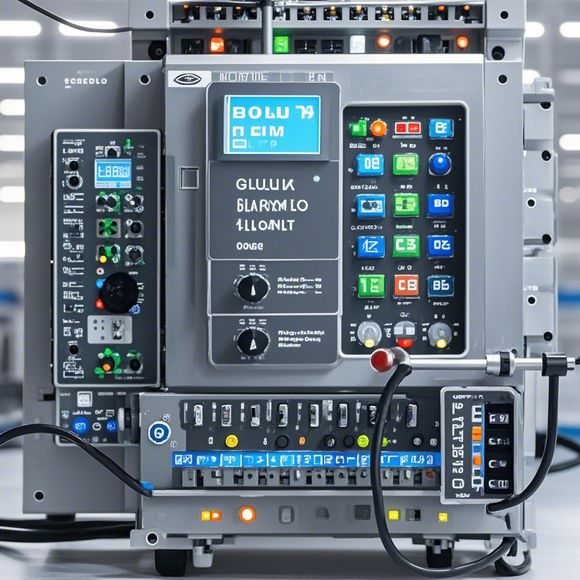PID Control Principle Diagram for Automated Manufacturing Processes
PID Control Principle Diagram for Automated Manufacturing ProcessesThe PID (Proportional-Integral-Derivative) control principle is a fundamental technique used in automation systems to maintain constant output levels. This system diagram illustrates the components of a PID controller in an automated manufacturing process. The controller consists of three parts: the Proportional (Kp), Integral (Ki), and Derivative (Kd) parts, which together determine the output signal that regulates the process. The Kp component calculates the error between the set point and the actual value. The Ki component accumulates this error over time, providing a smooth response to changes in the process. The Kd component predicts future changes in the process based on its past behavior, allowing the controller to react quickly to disturbances or unexpected events. By adjusting these three parameters, the PID controller ensures that the output signal remains within a narrow range, maintaining stability and performance in automated manufacturing processes.
Introduction:

In the field of industrial automation, the use of PLC (Programmable Logic Controller) is a cornerstone in the control and monitoring systems. The PID control principle diagram, which stands for Proportional, Integral, Derivative, is a fundamental tool that helps in managing the process variables within the manufacturing environment.
PID Controller Basics:
The PID controller is an integral part of any control system. It consists of three main components:
1、Proportional (Kp): This component calculates the error between the setpoint and the current output value. If the difference is large, Kp increases the output to bring the system closer to the setpoint.
2、Integral (Ki): This component calculates the sum of all past errors. If there's a sudden change in the system, Ki will adjust the output quickly to minimize the disturbance on the system.
3、Derivative (Kd): This component determines how much the output should change in response to a given disturbance. If the disturbance is constant, Kd will maintain the output at a stable level.
Diagram Structure:
The PID control principle diagram typically looks like this:
- The upper left corner represents the input signal (e.g., temperature sensor reading).
- The middle area shows the Kp component, which reacts to the error in the input signal and adjusts the output accordingly.
- The lower right corner includes the Ki and Kd components, which smooth out the output by integrating past errors and adjusting the output in response to future changes in the system.
Operational Aspects:

When designing a control system using a PID controller, several factors need to be considered:
1、Setpoint: The desired value of the output variable.
2、Input Signal: The actual value of the output variable as measured by the sensor.
3、Time Constants: These are the time it takes for the output to reach its steady state when the setpoint changes. They are calculated by dividing the total time by the number of time steps.
4、Overshoot and Undershoot: These are the maximum and minimum values of the output variable during the first few time steps after the setpoint changes.
Applications in Manufacturing:
The PID control principle can significantly improve the efficiency of manufacturing processes. By accurately controlling parameters such as temperature, pressure, or flow rate, production yields can be optimized, reducing waste and increasing productivity. Additionally, PID controllers can help prevent equipment damage due to overheating or underpressure conditions by automatically adjusting the process settings to maintain safe operating conditions.
Conclusion:
The PID control principle diagram plays a crucial role in ensuring the stability and efficiency of industrial automation systems. By understanding the components and their interactions, businesses can design and implement effective control strategies that optimize their manufacturing processes. With proper implementation, PID controllers can lead to increased product quality, reduced downtime, and enhanced overall operational performance.
Content expansion reading:
Articles related to the knowledge points of this article:
PLC Controller Selection Guide for Foreign Trade Operations
The cost of a PLC Controller: A Comprehensive Analysis
PLC Programming for Automation Control in the Manufacturing Industry
The Role of Programmable Logic Controllers (PLCs) in Foreign Trade Operations